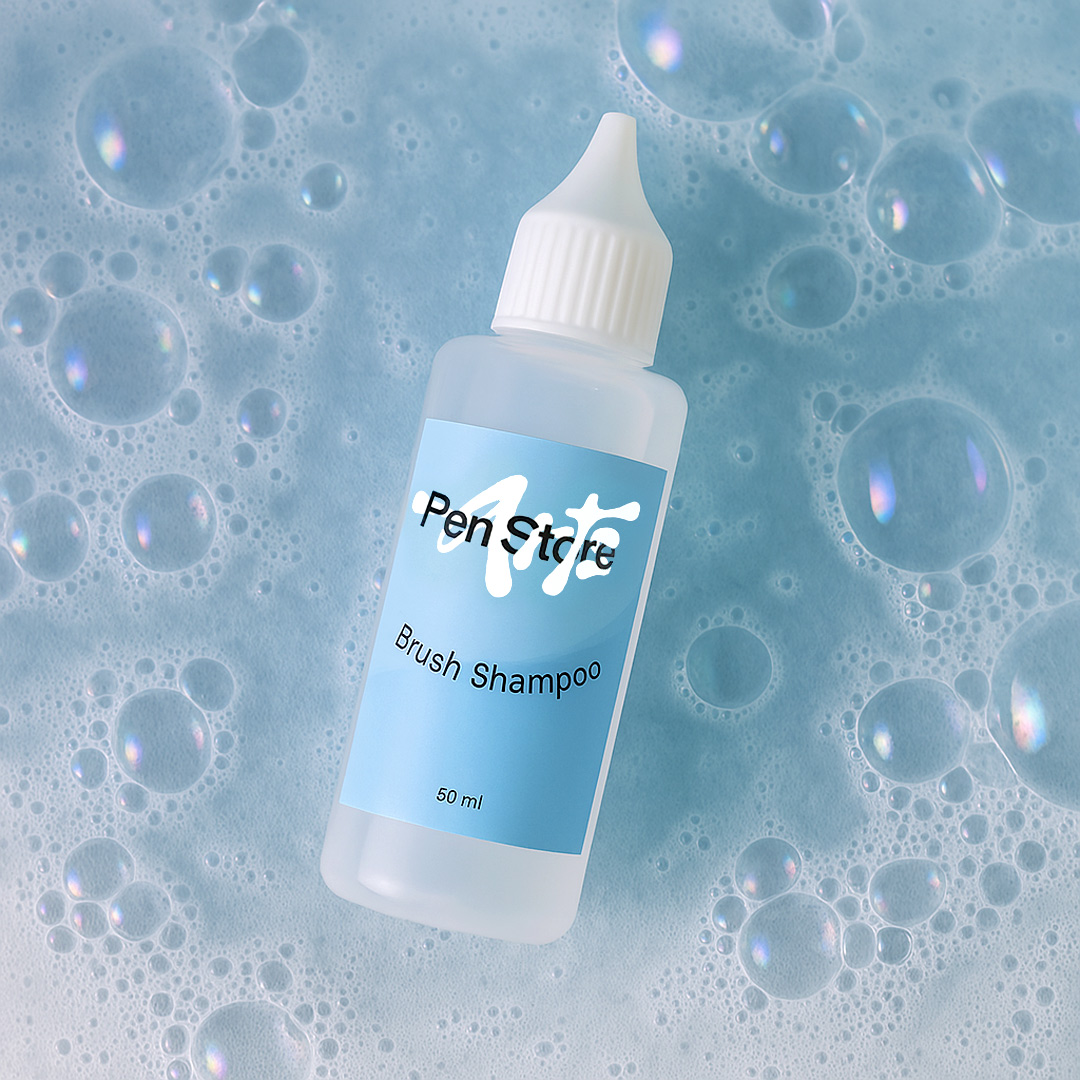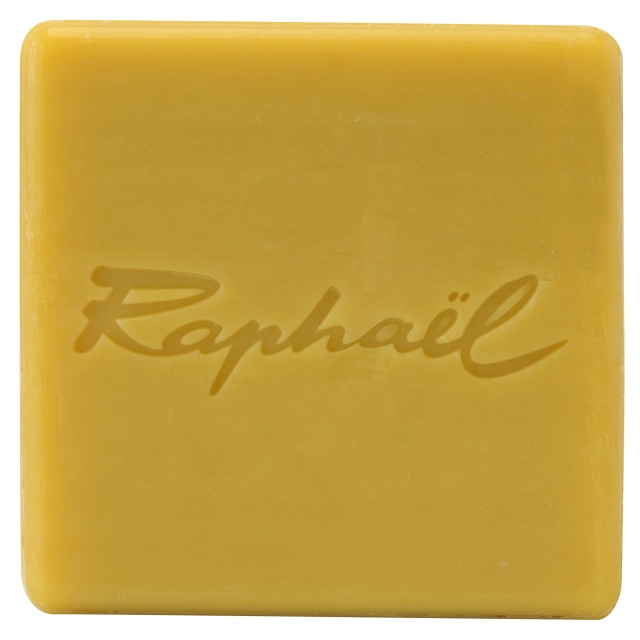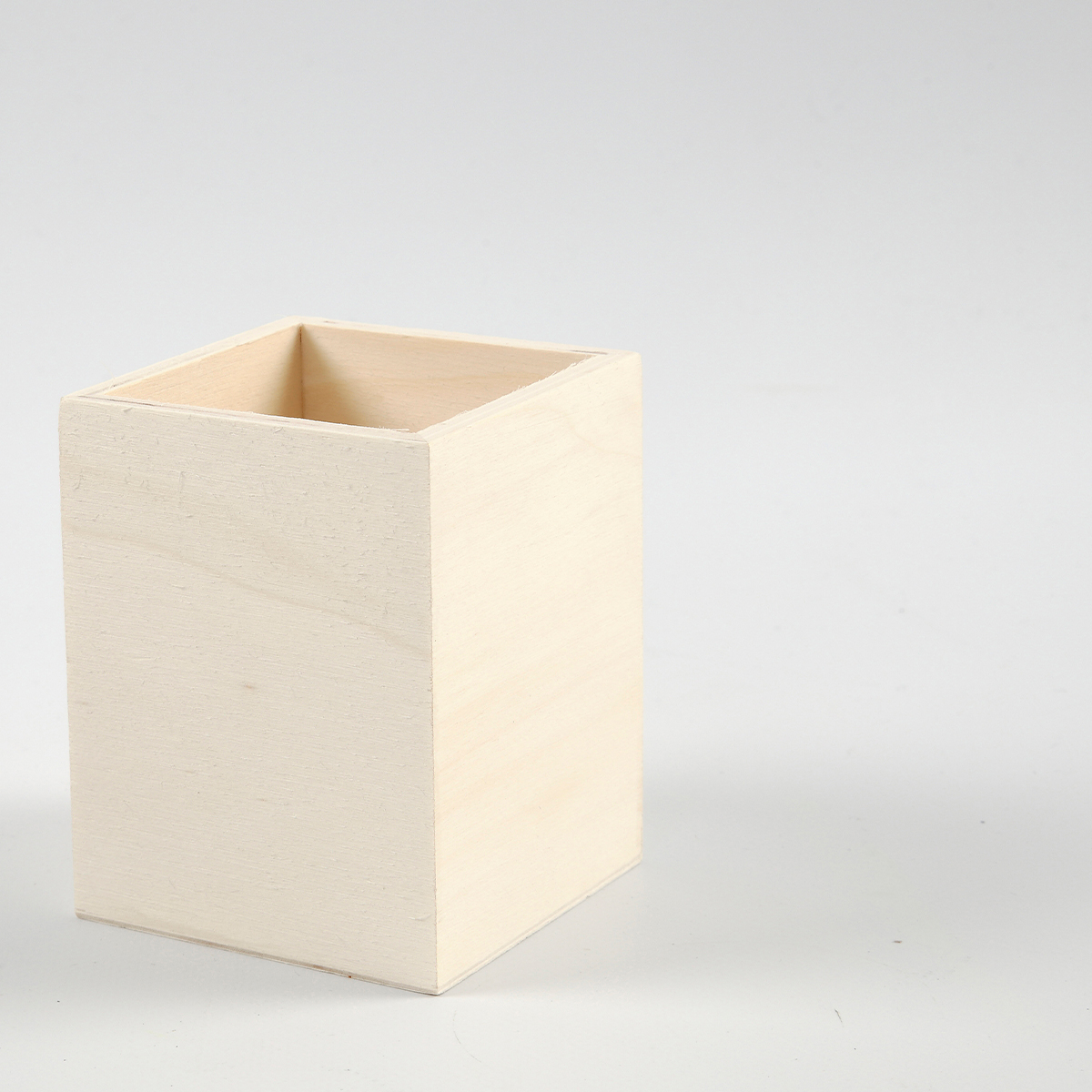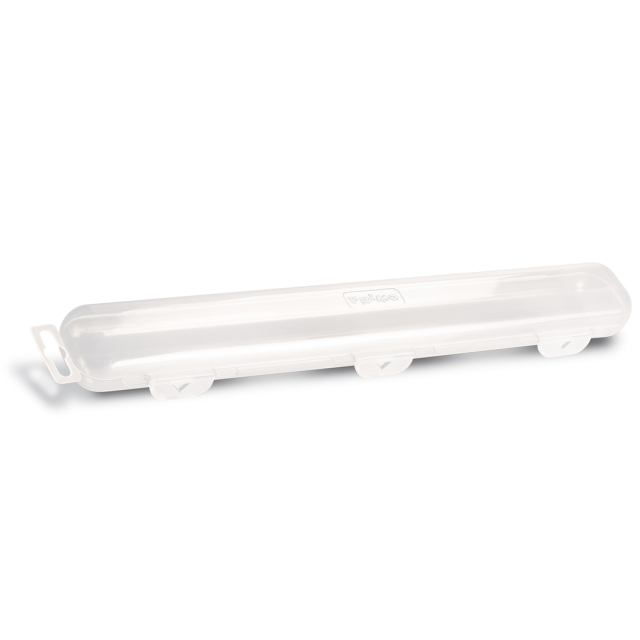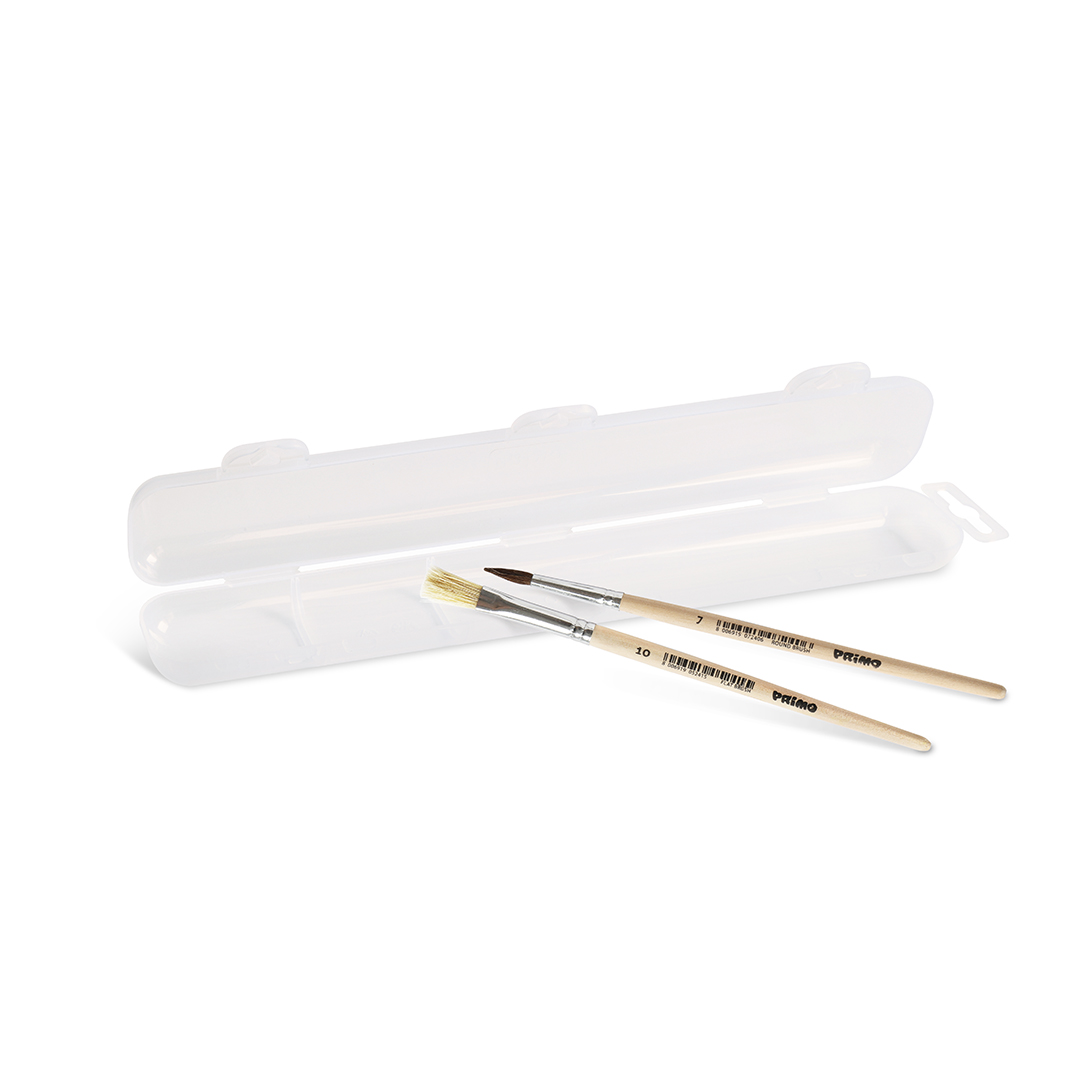Watercolour brushes are delicate tools that can lose their shape and spring if handled incorrectly. Get to know your brushes and their needs, with useful advice on cleaning, storage and use in our care guide.
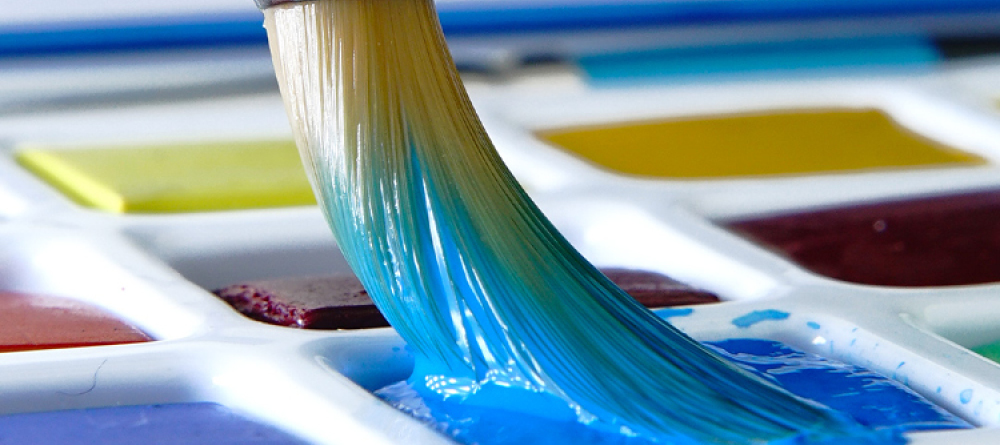
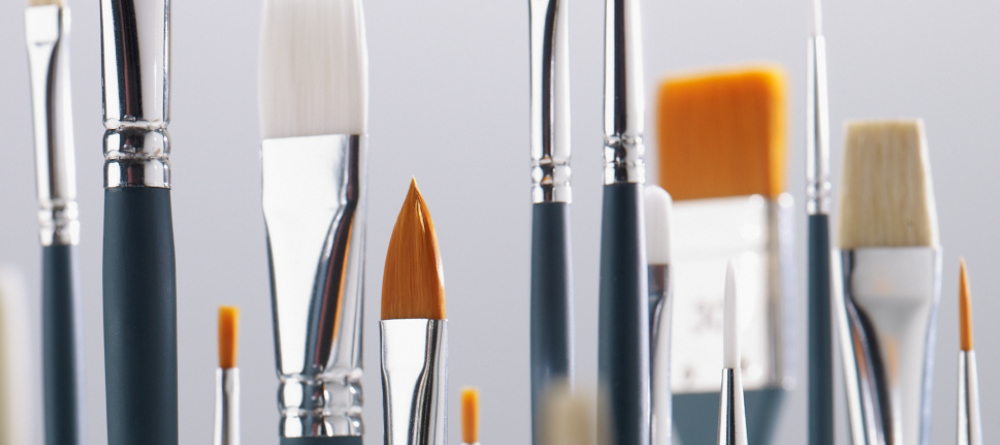
The different parts of a watercolour brush
- Handle: You hold the handle while painting. It can be made of wood or plastic and often shows the name and series number.
- Ferrule: The metal part of the brush that connects the handle to the brush head. The bristles are secured with glue inside the ferrule.
- Head: The bristles of the brush are also called the head. They can be made from animal hair or synthetic fibres and come in different shapes. Round and oval brushes form a fine, sharp point, ideal for painting small, precise lines and details. To maintain the shape of the tip, careful handling and proper care are especially important.

Cleaning watercolour brushes
Watercolour paint is light in consistency and does not cling to the brush like acrylic or oil paint. After use, it is perfectly sufficient to rinse the brush under running water, then dry it horizontally or hanging with the tip facing downwards. Do not place it with the tip upwards until it is completely dry, as water can collect in the ferrule and dissolve the glue. A few times a year, you can wash the brush with shampoo or soap to preserve its shape, spring and cleanliness. Soap removes dust and old pigment that tends to build up in the ferrule and the head.
Read more: How to clean watercolour brushes ⭢
Cleaning watercolour brushes
Watercolour paint is light in consistency and does not cling to the brush like acrylic or oil paint. After use, it is perfectly sufficient to rinse the brush under running water, then dry it horizontally or hanging with the tip facing downwards. Do not place it with the tip upwards until it is completely dry, as water can collect in the ferrule and dissolve the glue. A few times a year, you can wash the brush with shampoo or soap to preserve its shape, spring and cleanliness. Soap removes dust and old pigment that tends to build up in the ferrule and the head.
Read more: How to clean watercolour brushes ⭢
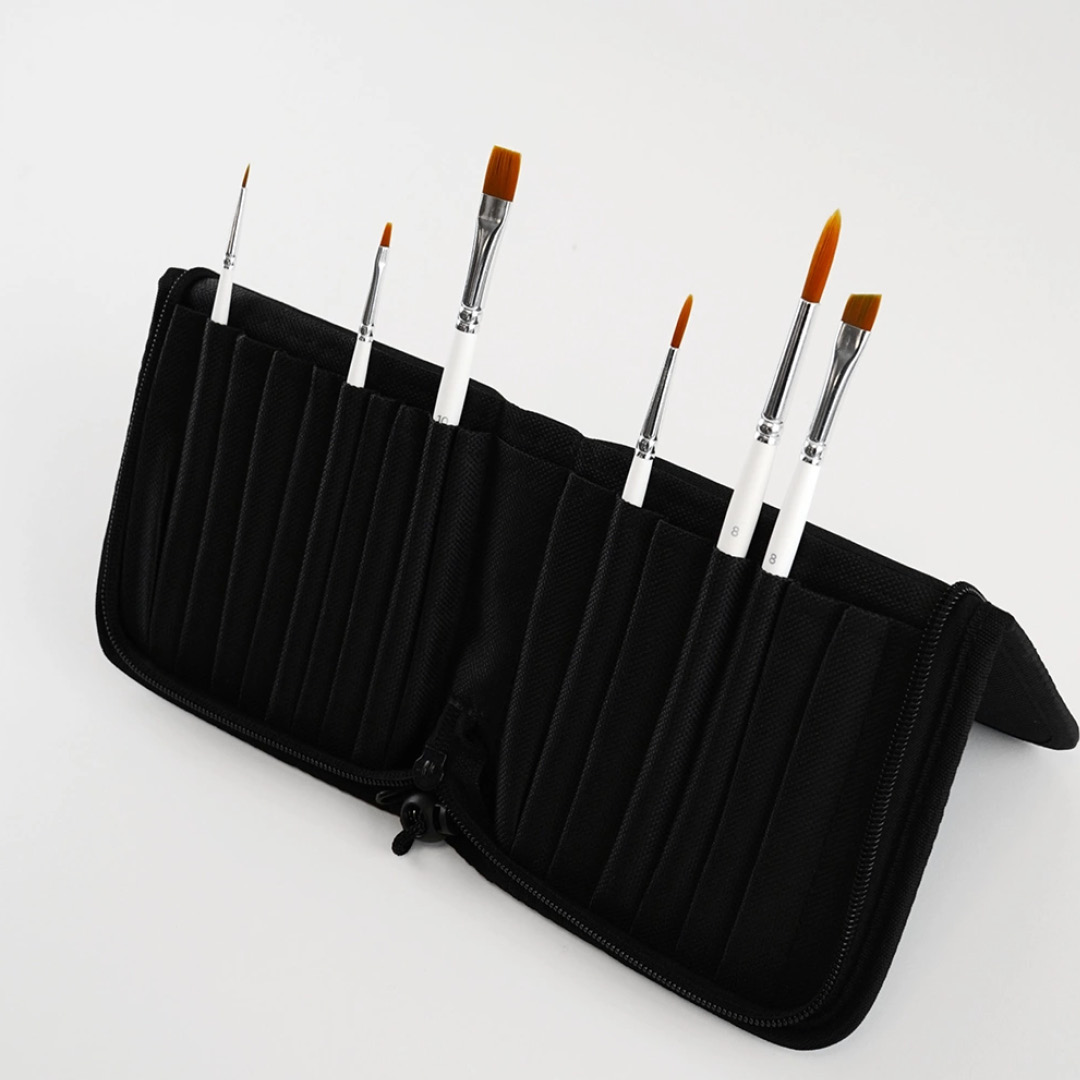
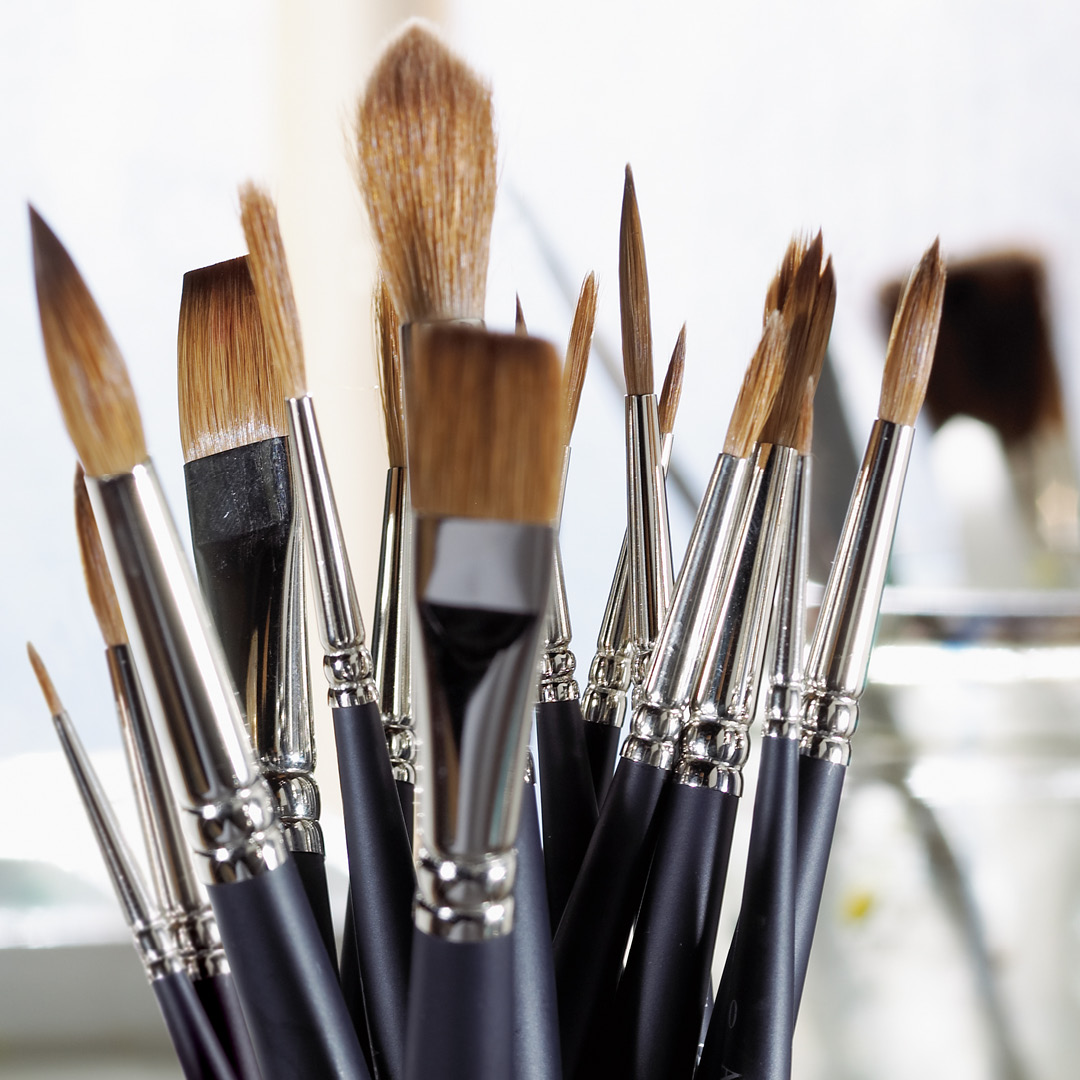
Be gentle when painting
It is important to handle your brushes carefully, even while painting. Here are some smart tips for your next session.
- Work gently with the paint. When picking up paint from watercolour pans, avoid aggressive movements that can damage the tip. First spray the pans with water to soften the paint, then use soft, sweeping strokes. Never stir with the tip pointing downwards.
- Separate brushes for tougher techniques. Some techniques, such as dry brushing, scrubbing the brush against the paper, or lifting paint from the paper with a dry brush, are especially hard on your tools. Use a simpler, synthetic brush for these tasks instead of your finest brushes.
- The right medium for the right brush. Use your watercolour brushes only for watercolour, and keep separate brushes for masking fluid or acrylics.
- Correct storage while painting. Never leave the brush standing with the tip down in the water container. It is easy to do, but even a short time in the cup can damage the tip.
- Be mindful of your hands. Avoid touching the brush head with your fingers. The skin’s natural oils can, over time, create a coating on the bristles that reduces the brush’s ability to absorb water. The only exception is during gentle cleaning and shaping of the tip.
 Ireland (EUR)
Ireland (EUR)
